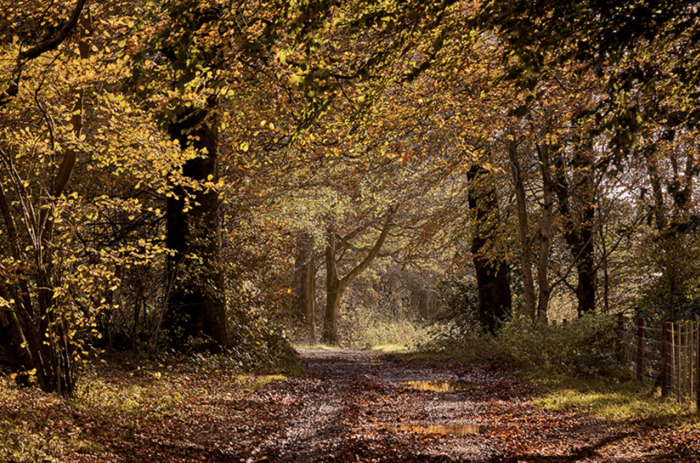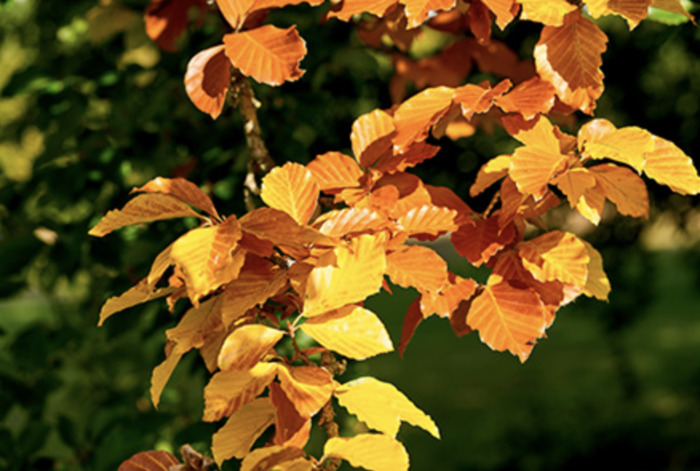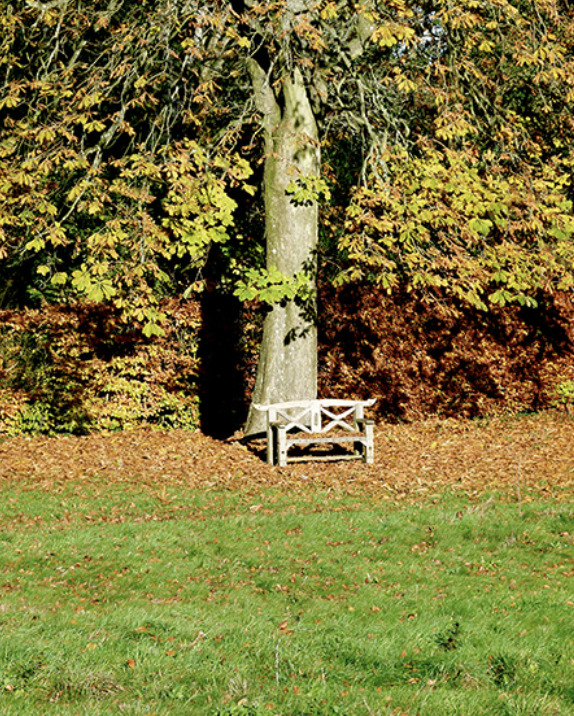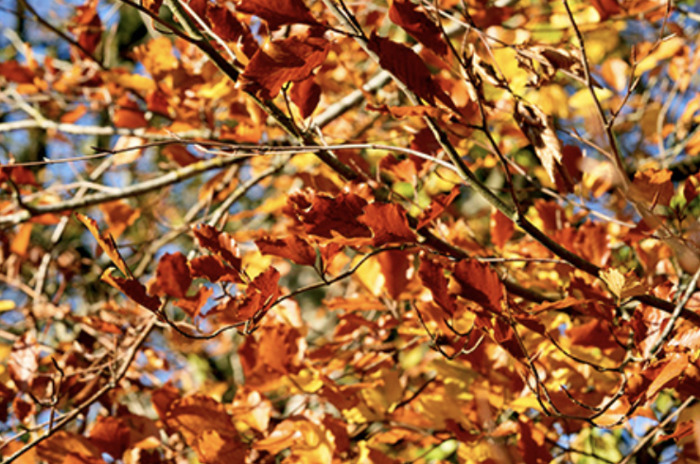Guest Blog Post by Lady Carnarvon | Falling Leaves
|

The dogs are running under and around a garden bench, round and round until one of them spies a twig instead and, picking it up, a new game of tag develops. These are the magic moments.
Bending down to pick up a leaf myself, I hold it carefully on the flat of my hand. It is starting to curl and the summer colours leaving it for the fading autumn tints, yet it is still beautiful and represents the change in the year’s seasonal journey for a tree.
During spring and summer, trees fill their leaves with green chlorophyll in order to generate as much energy as possible.
The vivid greens of spring hearten our moods as well, they are so rich and full of water and sun. Then, as summer sun lengthens, they anticipate the freezings of winter. The trees draw the energy back from the leaf into the tree to store the sugars to tide them over the coming colder, darker season.

Thus the chlorophyll – the greenness – stops being produced and the carotenes in the leaf become more visible – they are yellow and the drier and sunnier the autumn, the more anthocyanins are produced, which are red and pink coloured, so the leaves turn even more shades of extraordinary colour.

With cooler temperatures the layer of cells called the abscission layer which passes the sugars back into the tree comes under stress, the production of one hormone called auxin reduces which puts a strain on this abscission layer causing the bond between leaf and branch to weaken. Eventually, the strength of the join is weakened enough that the wind will blow the leaf away.
Less leaves means the tree spends less energy through the harsh winter and it is able to conserve moisture within the trunk which helps the tree remain pliable, bending in the gusts of winter winds. Less leaves also means that the wind whips through bare branches once more causing less strain on the tree.

Apart from the very important childish pleasure of catching falling leaves, the cycle of the trees creates essential biological support to the woodland floor activity in the soil. The leaves falling to the forest floor of an oak or beech will rot down and into the soil over the next two years and if you wish, you can collect it and let it rot down to use as an invaluable soil conditioner. It is an excellent habitat for soil life, from earthworms to beneficial bacteria as well as acting as a blanket over the soil during wintery months helping small mammals.
We have a habit of interpreting nature to bolster our own thoughts and in some ways of course autumn does teach us the beauty of letting go. It is what the trees are prepared to do in order to live.

Geordie and I have planted areas of trees and shrubs with wonderful autumn colours, perhaps it is the warmth of the reds and oranges, the romance of curling up by a log fire, of a cosy oversized sweater or the smell of autumn in the air. Perhaps it is, the predictability of seasons being constant in our lives – something that can prove particularly comforting when the world and its values feel topsy turvy. Thank you to trees for all their glory:
“Go, sit upon the lofty hill, And turn your eyes around, Where waving woods and waters wild Do hymn an autumn sound.” (Elizabeth Barratt Browning)
